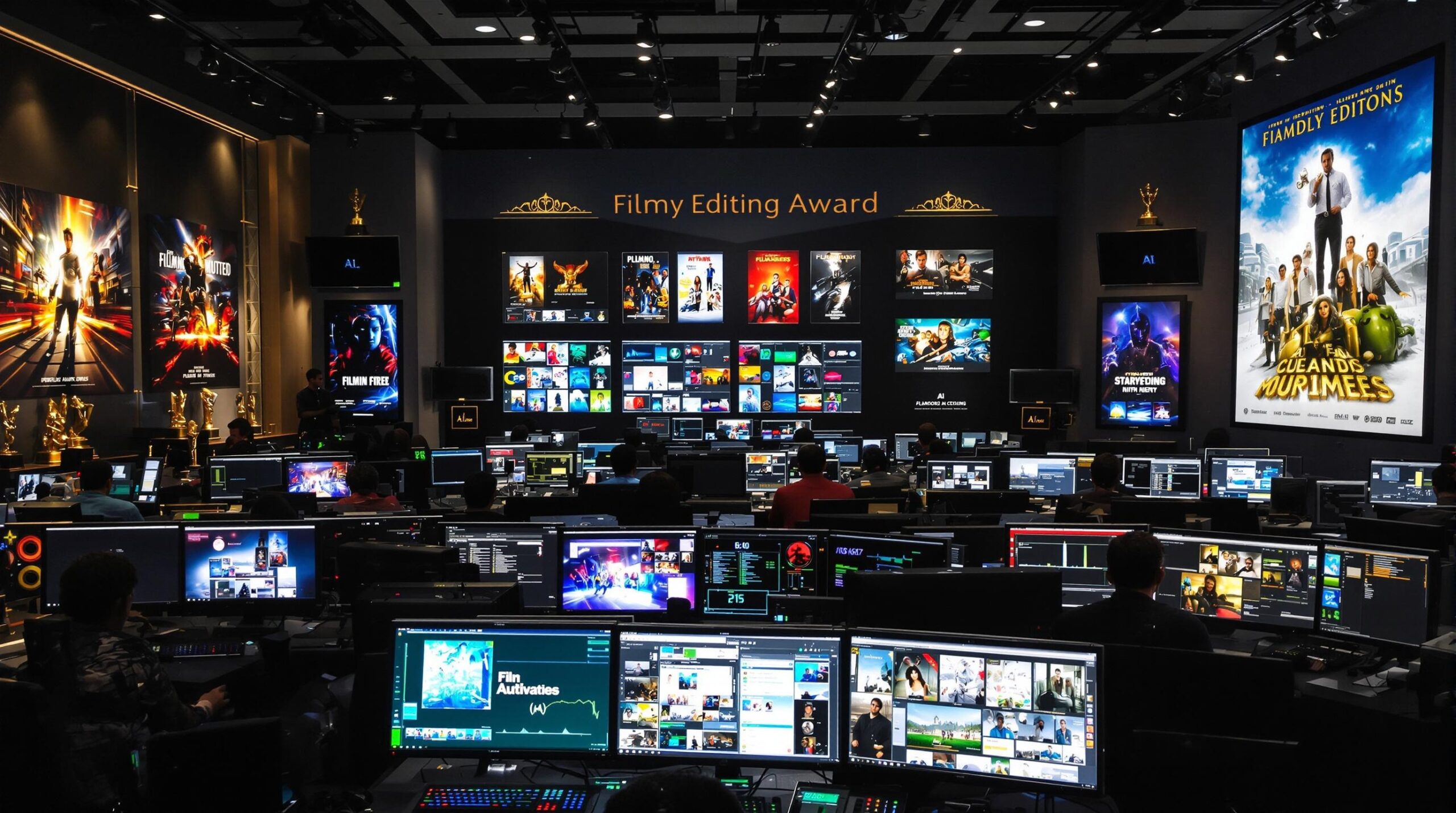The world of film editing is undergoing a significant revolution. Artificial Intelligence (AI) is at the center of this transformation. With rapid advancements in AI technology, filmmakers are embracing innovative methods to streamline the editing process. Hollywood, known for its iconic studio system, is not immune to this change.
Revolutionizing the Editing Process
AI-driven film editing is redefining how editors approach their craft. Traditional editing is time-consuming and labor-intensive, but AI simplifies these tasks. Machines can analyze footage and suggest cuts and transitions with incredible accuracy. This efficiency allows films to move from production to final cut faster.
AI also offers consistency in editing. Human editors may vary in style and precision, but AI maintains a uniform approach. Consistency ensures that every project meets high standards and matches the director’s vision.
Moreover, AI can perform repetitive tasks, leaving editors to focus on creative decisions. This capability enriches films with creativity and innovation. Editors can spend more time refining crucial scenes and crafting compelling narratives.
The Role of Machine Learning
Machine learning, a subset of AI, plays a crucial role in film editing. Algorithms learn patterns and styles from analyzing vast amounts of data. These systems can adapt to different genres and tailor edits to the film’s mood and tone.
Predictive algorithms evaluate multiple editing styles to find the most effective options. Based on prior films, they learn which techniques resonate with an audience. This insight can enhance a film’s emotional impact and audience engagement.
AI can even identify continuity errors. It compares scenes for mismatches in lighting, props, or actor placement. This automatic detection makes films more polished and professional. It also saves time that would be spent on manual error-checking.
Enhancing Collaboration and Accessibility
AI tools facilitate collaboration between filmmakers, editors, and producers. Cloud-based platforms allow multiple stakeholders to contribute and review edits in real time. This collaboration eliminates communication gaps and speeds up decision-making processes.
Advanced AI systems can also provide rough cuts for immediate feedback. Directors and producers can quickly assess these cuts and make informed creative decisions. This dynamic workflow fosters a more efficient production environment.
Furthermore, AI editing platforms democratize filmmaking tools. Independent filmmakers gain access to sophisticated editing processes once reserved for major studios. This accessibility levels the playing field and encourages diverse storytelling.
Overcoming Challenges and Concerns
As with any technological advancement, AI-driven film editing presents challenges. One major concern among professional editors is the fear of job loss. However, AI is unlikely to replace human creativity. Instead, it acts as a tool to enhance manual editing.
Furthermore, there are concerns about the authenticity of AI-edited films. Critics worry that machine-made decisions could lack the nuanced judgment of a seasoned editor. While AI can replicate certain styles, the human element remains essential for emotional depth.
Ethical considerations also arise with AI’s ability to manipulate footage. The potential for misuse exists in creating doctored content or deepfake scenarios. The industry must establish guidelines to ensure ethical practices in AI-assisted editing.
The Future of AI in Film Editing
The future of film editing with AI technology looks promising. Continuous advancements refine algorithms, offering more sophisticated editing capabilities over time. AI’s integration with other technologies, like virtual reality, could transform audience experiences.
Imagine a film that changes based on real-time audience reactions. AI could adjust scenes for a personalized viewing experience. This possibility could redefine traditional storytelling and viewer engagement.
Furthermore, AI could drive innovation in content creation. Machines can assist writers in generating scripts or suggesting plot variations. These tools would inspire and support creative individuals in crafting unique narratives.
Maintaining a balance between technology and artistry will remain critical. Emphasizing collaboration, the industry can harness AI’s potential while preserving the human touch in filmmaking.
Conclusion
AI-driven film editing is a trend and a monumental shift in the entertainment industry. AI is transforming how films are made by automating repetitive tasks, improving collaboration, and enhancing storytelling. Hollywood is embracing these changes and may be at the forefront of a new era in cinema.
AI’s impact on film editing will continue to grow as technology advances. This progression offers challenges and opportunities, affecting filmmakers and audiences alike. By aligning innovation with ethical standards, the industry can ensure a future where technology enhances creativity. Through AI, the magic of cinema advances, opening new possibilities for stories yet to be told.


